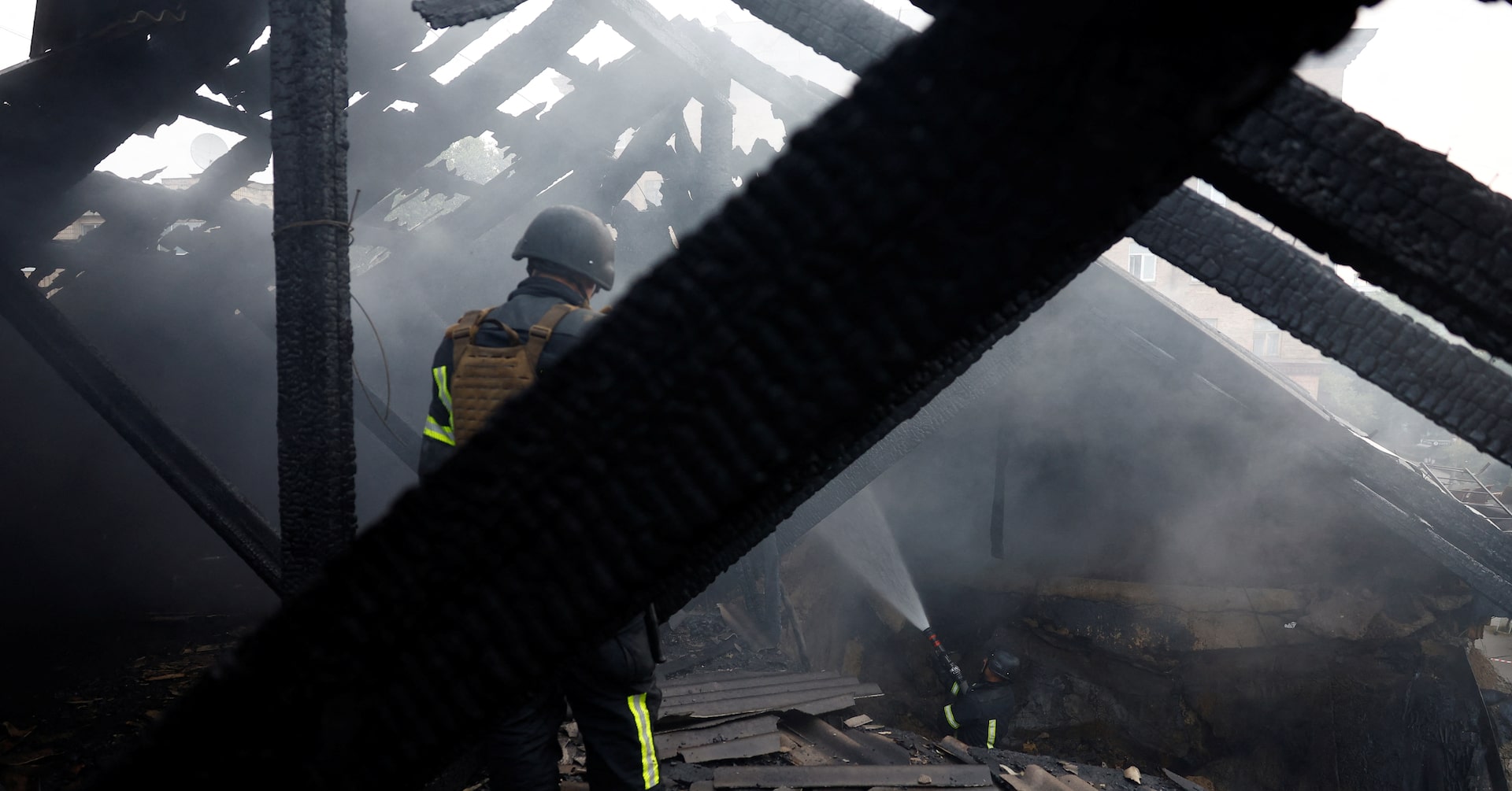In the early hours of July 10, 2025, Ukraine’s capital, Kyiv, endured one of the deadliest and most intense aerial assaults since the beginning of Russia’s full-scale invasion. The attack, which lasted nearly ten hours, involved a massive barrage of drones and missiles that left the city reeling, with at least two people dead and over twenty injured. This latest strike marked a significant escalation in Russia’s ongoing campaign against Ukraine, targeting not only military infrastructure but also residential neighborhoods and vital civilian services.
The Scale and Nature of the Attack
According to Ukrainian officials, the assault began shortly after midnight and continued until dawn. Russia launched approximately 400 drones—many of them Iranian-designed Shahed attack drones—and at least 18 missiles at Kyiv and surrounding regions. The city’s air raid alarms blared for hours as explosions and anti-aircraft fire echoed through the night.
Kyiv was the primary target, but other regions, including Chernihiv, Sumy, Poltava, Kirovohrad, and Kharkiv, also came under attack.
The Ukrainian Air Force reported that 14 missiles and 164 drones were shot down, while another 204 drones and missiles were neutralized by electronic warfare measures.
Despite the effectiveness of Ukraine’s air defenses, dozens of drones and missiles penetrated the city’s protective shield, causing widespread destruction and panic.
Human Cost and Civilian Impact
The immediate aftermath of the attack was devastating. Fires broke out across multiple districts in Kyiv, including Shevchenkivskyi and Darnytskyi, as debris from intercepted drones and missiles rained down on residential buildings, vehicles, warehouses, and offices.
Casualties: At least two people were confirmed dead—a 68-year-old woman and a 22-year-old police officer. More than twenty others were injured, with at least ten requiring hospitalization. Among the wounded were several civilians who suffered shrapnel injuries and burns.
Destruction: The Podilskyi district saw a primary healthcare center “almost completely destroyed,” and the studio of a local television channel sustained significant damage, disrupting broadcasting. Numerous apartment buildings and cars were also set ablaze.
Displacement: Many residents spent the night seeking shelter in subway stations and underground bunkers, clutching children, pets, and essential belongings as explosions shook the city above them.
Strategic and Psychological Significance
This attack was the second massive aerial strike on Kyiv in as many days, signaling a clear escalation in Russia’s tactics. Ukrainian President Volodymyr Zelensky described the onslaught as “an obvious escalation of terror,” aimed at overwhelming Ukraine’s air defenses and breaking the spirit of its people.
Psychological Toll: The relentless nightly attacks have left Kyiv’s population exhausted and traumatized, with many struggling to cope with the constant threat of death and destruction.
Strain on Defenses: Ukrainian air defenses, though highly effective, are being stretched thin by the sheer volume and frequency of attacks. The use of decoy drones and mixed missile types is designed to confuse and overwhelm defensive systems.
International Response: The timing of the assault coincided with renewed diplomatic efforts between the United States and Russia, as well as discussions among Ukraine’s Western allies regarding the continued supply of military aid and advanced weaponry.
Broader Context and Escalation
The July 10 attack is part of a broader pattern of intensifying Russian aggression throughout late spring and early summer 2025. In June alone, Ukraine recorded the highest monthly civilian casualties in three years, with over 230 people killed and more than 1,300 injured nationwide.
Recent Trends: Russia has increasingly relied on mass drone and missile barrages to target Ukrainian cities far from the front lines, seeking to inflict maximum civilian suffering and infrastructure damage.
Ukrainian Resilience: Despite the devastation, Ukrainian authorities and emergency services have responded swiftly, extinguishing fires, rescuing survivors, and repairing critical infrastructure under constant threat.
Conclusion
The deadly new Russian drone and missile attack on Kyiv underscores the brutal reality of the ongoing war in Ukraine. As the conflict grinds into its fourth year, the people of Kyiv and other Ukrainian cities continue to endure unimaginable hardship and danger. The attack highlights both the resilience of Ukraine’s defenders and the urgent need for sustained international support to counter Russia’s escalating campaign of terror.

